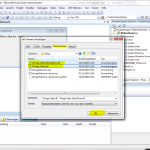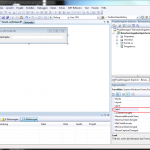How to add DLL to Visual Studio projects
Some days ago I received an email, in which I was asked, how to embed/include .dll-files to into Visual Studio projects. So here comes the answer to the question: How to add dlls to an ongoing Visual Studio project?
The solution to the problem is closer than some of you might think. First you right-click on the “references”-label in the Solution Explorer and click in the context menu on “Add reference” . (Fig. 1)
Now click on the “Browse” button, select the desired (. NET compatible) DLL and confirm your selection by clicking on the “Ok” button. (Fig. 2)
In the last step you can add the appropriate using directives in your source code for an easier access to the methods of the obtaining DLL. (Fig. 3)



 If you have created the project and added to the controls, your Application should look similar to the left-hand picture.
If you have created the project and added to the controls, your Application should look similar to the left-hand picture.